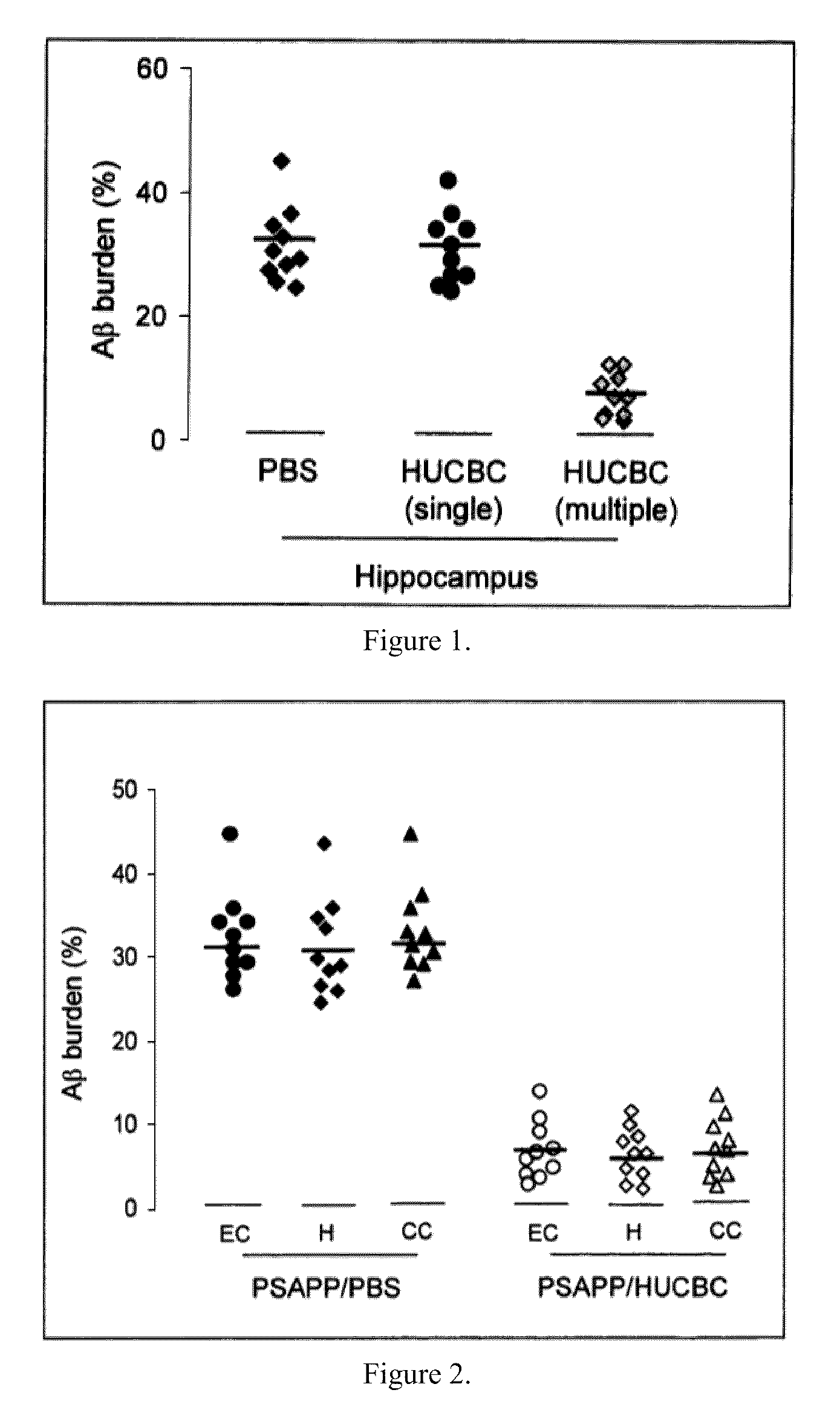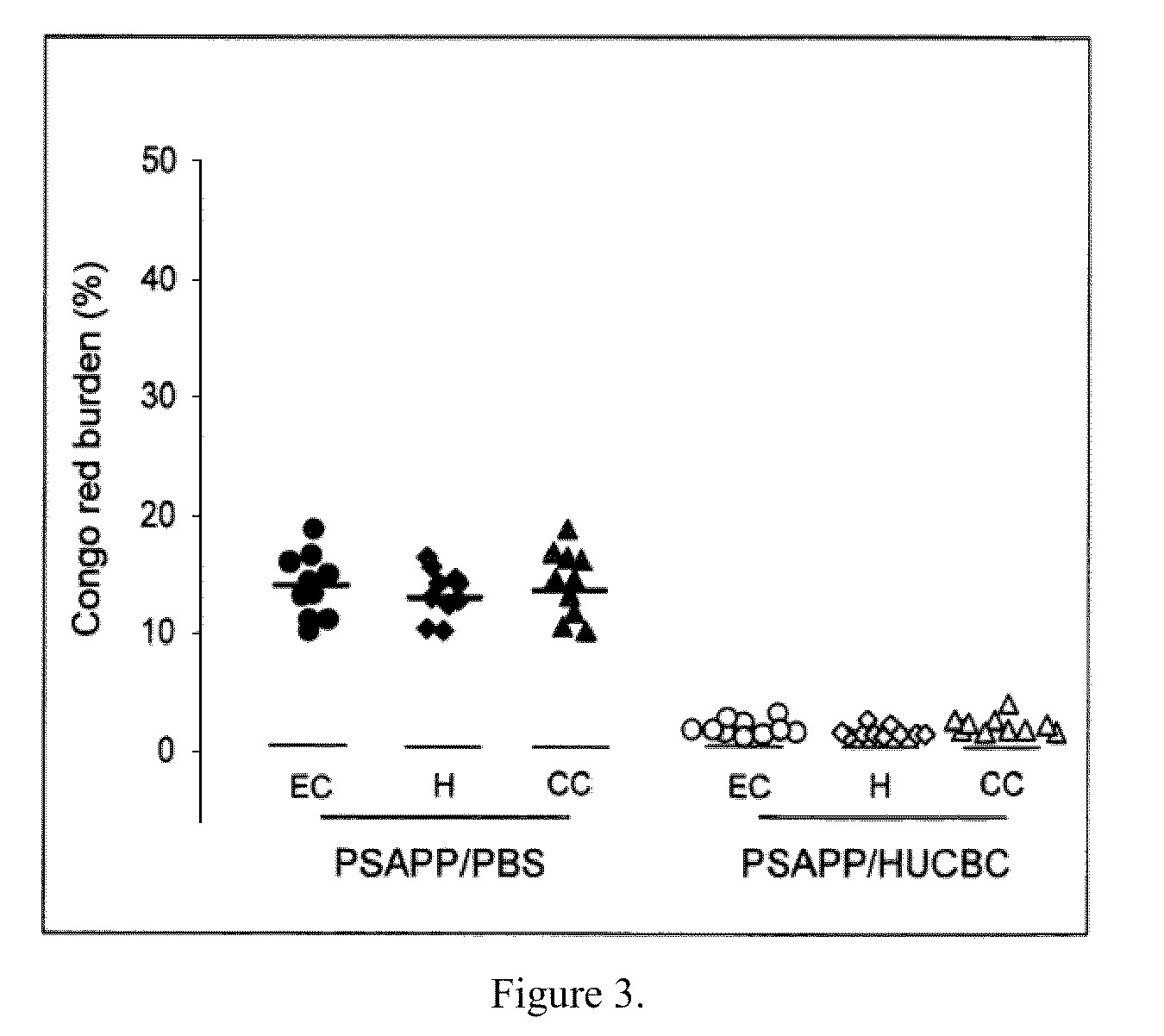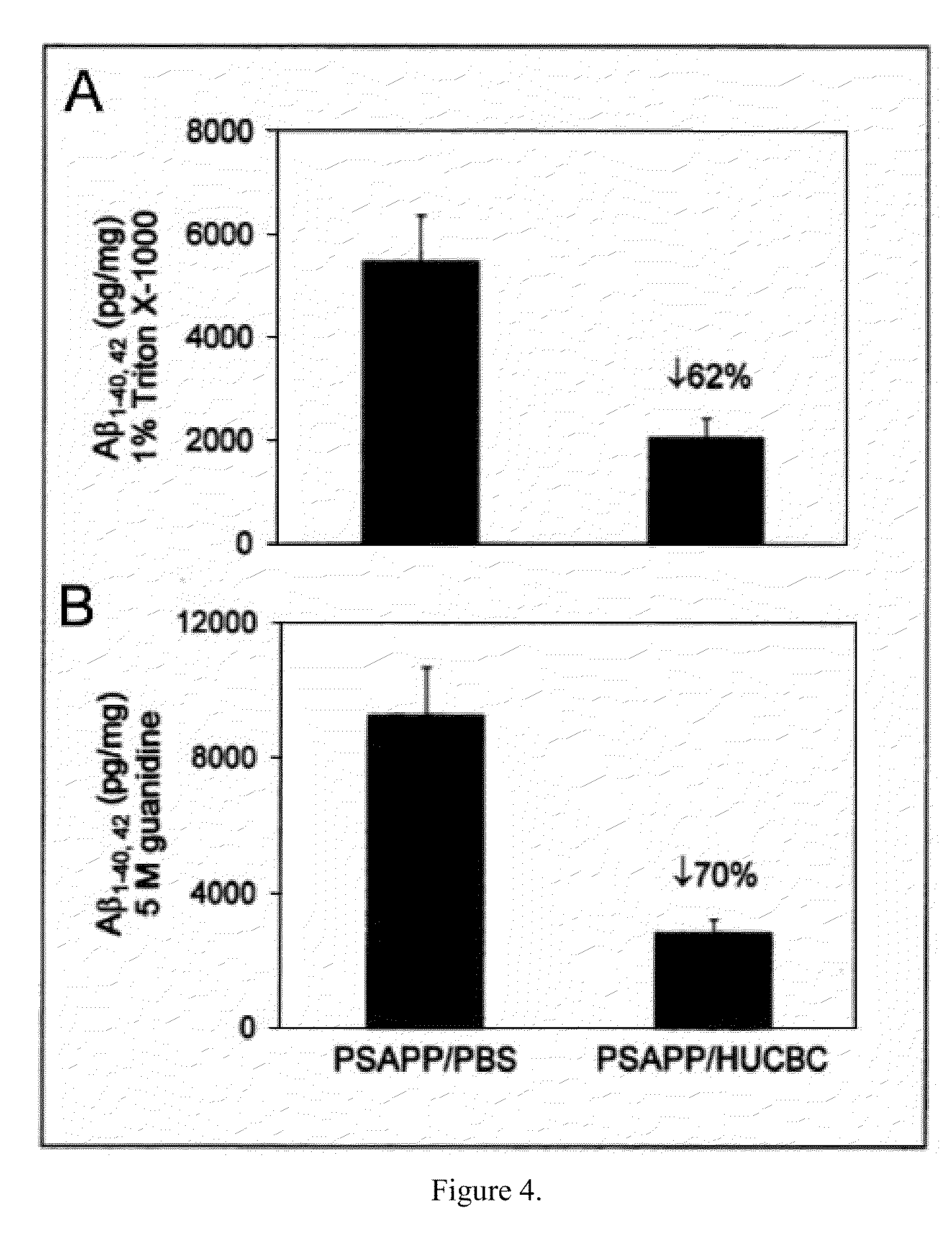Hucbc treatment of amyloid associated disease
a technology of amyloid and hucbc, which is applied in the field of amyloid protein-based diseases, can solve the problems of increased risk of bleeding associated with nsaid use, strong side effects of treatment, etc., and achieve the effects of reducing a burden, improving cognitive deficits, and reducing cerebral a deposits
- Summary
- Abstract
- Description
- Claims
- Application Information
AI Technical Summary
Benefits of technology
Problems solved by technology
Method used
Image
Examples
examples
[0063]Transgenic PSAPP (APPswe, PSEN1dE9; Jackson Laboratory, Bar Harbor, Me.) and Tg2576 (Taconic, Inc., Hudson, N.Y.) mice were intravenously (i.v.) treated starting at 7 months of age (visible Aβ histological deposit formation of age. These mice were treated with HUCBC (100,000 cells / mouse, 98% mononuclear cells; Saneron CCEL Therapeutics, Inc., Tampa, Fla.) or PBS biweekly for the first two months and monthly for the remaining four months (n=10 / group, 5♂ / ♀). Blood was collected by sub-mandibular bleeding at 0, 2, 4 and 6 months to monitor plasma cytokine, sCD40L and Aβ changes throughout the study. The mouse brains were analyzed for Aβ deposits and gliosis at 13 months of age, when the mice typically manifest well established AD-like pathology. PSAPP mice deficient in CD40 and controls were treated at 8 weeks of age, when Aβ proteins reach detectable levels. Blood was collected by submandibular bleeding at two months following treatment.
[0064]Mice were anesthetized with isofluor...
PUM
 Login to View More
Login to View More Abstract
Description
Claims
Application Information
 Login to View More
Login to View More - R&D
- Intellectual Property
- Life Sciences
- Materials
- Tech Scout
- Unparalleled Data Quality
- Higher Quality Content
- 60% Fewer Hallucinations
Browse by: Latest US Patents, China's latest patents, Technical Efficacy Thesaurus, Application Domain, Technology Topic, Popular Technical Reports.
© 2025 PatSnap. All rights reserved.Legal|Privacy policy|Modern Slavery Act Transparency Statement|Sitemap|About US| Contact US: help@patsnap.com



